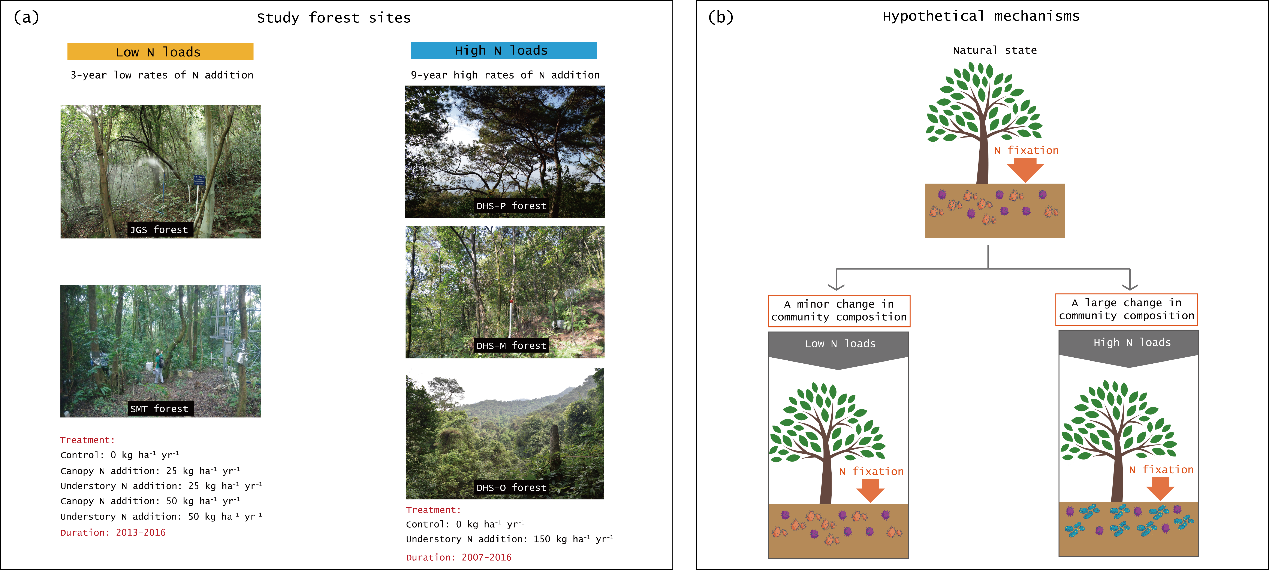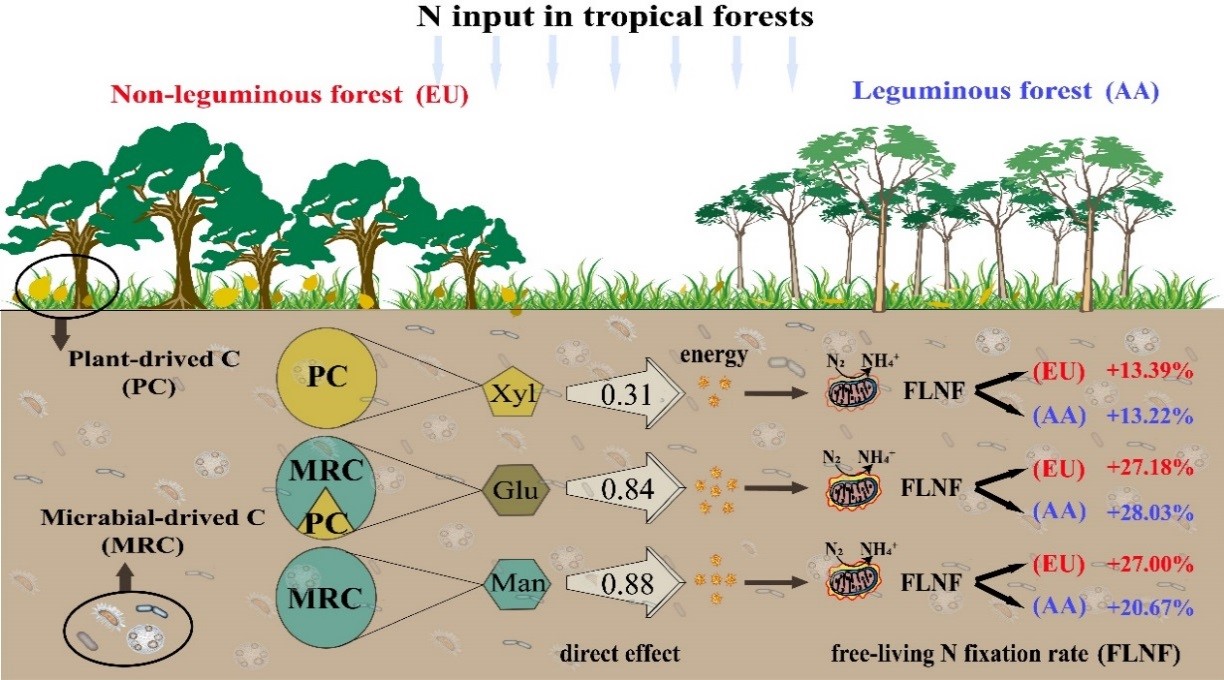Diazotrophs fix nitrogen in nitrogen-rich forest soils as driven by carbon inputs
Free-living nitrogen fixation (FLNF) serves as an important nitrogen (N) source in terrestrial ecosystems. Numerous previous studies have indicated that N addition inhibits the rate of FLNF, which contradicts with increasing recent research. The mechanisms driving FLNF in N-rich environments remain unclear. FLNF is a typical energy-consuming process, and soil with active organic carbon (C) may serve as a potential energy source for diazotrophs. Therefore, investigating how C inputs from different sources affect FLNF (especially under N addition) will enhance our understanding of the driving mechanisms underlying FLNF.
The Ecosystem Management research group, led by Principal Investigator Dr. Mianhai Zheng at the South China Botanical Garden, Chinese Academy of Sciences, utilizes experimental platforms at Dinghushan, Shimentai, and Jigongshan to compare the responses of diazotroph communities in forest soils subjected to low (short-term and low N addition) and high N (chronic and high N addition) treatments (Figure 1). The findings indicate that the richness and alpha diversity (ACE and Chao1) of the soil diazotroph community decreased under low N addition but remained unaffected under high N addition. Long-term high N treatment caused a significant shift of diazotroph community composition. These results suggest that in a long-term N-enriched environment, soil diazotrophs can sustain FLNF by adjusting community composition.
In order to further understand the driving mechanism of soil FLNF under N-enriched environment, PhD candidate Meichen Xu, under the guidance of Dr. Mianhai Zheng, collected soil which were subjected to long-term N treatment for experimental C addition and incubation (Figure 2). This research compared the influence and mechanisms of plant-derived C (xylan), microbial-derived C (mannose), and their combination (glucose) on FLNF. The results showed that both plant- and microbial-derived C enhanced FLNF, with microbial-derived C exerting a more pronounced effect. C input greatly impacted on FLNF than N application in tropical forest soils. C addition promoted FLNF in soils from both forests, with a more significant response observed in leguminous forest soils. Our study also suggests that if the input of organic C from litter into the soil increases by 5%, the increase of soil N inputs via FLNF will reach 2.2–3.9 Tg N yr-1.
The above studies, entitled ‘Soil diazotrophs sustain nitrogen fixation under high nitrogen enrichment via adjustment of community composition’ and ‘Plant and Microbial Carbon Are Important Drivers of Free-Living Nitrogen Fixation in Tropical Forest Soils: A New Discovery of Carbon-Driven Nitrogen Input’, were published online in mSystems and Geophysical Research Letters, respectively. The research were supported by Guangdong Basic and Applied Basic Research Foundation, National Key Research and Development Program of China, Youth Innovation Promotion Association CAS, among others.
Paper link:https://journals.asm.org/doi/10.1128/msystems.00547-24
https://agupubs.onlinelibrary.wiley.com/doi/10.1029/2024GL111238

Figure 1. The impact mechanisms of low (short-term and low N addition) and high N (chronic and high N addition) treatments on the diazotroph community in forest soils.

Figure 2. Impact of mechanisms underlying different types of C source inputs on FLNF in forest soils.